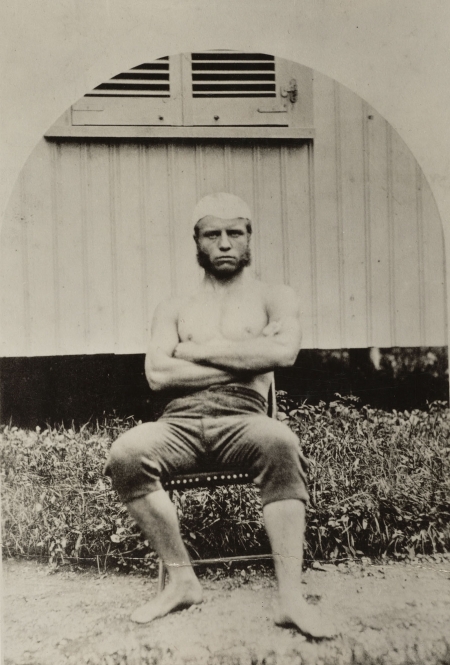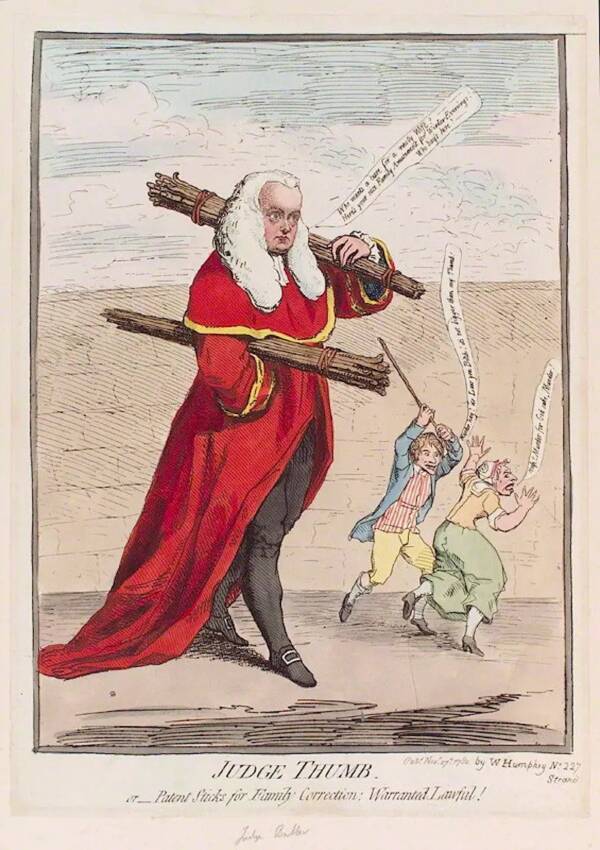A thread of the most famous 'freak show' performers in history
1. Myrtle Corbin, 'The Four Legged Girl' - Due to a condition known as dipygus, Corbin was born in 1868 with two separate pelvises situated side by side. With each pelvis, she also had two sets of legs. One set was average-sized, while the other was small. P.T. Barnum heard about her & decided to hire her for his show, introducing her to a large audience across America.
Following her successful circus career, Corbin married James Clinton Bicknell at the age of 19. She eventually went on to have five children, living a relatively quiet life in her later years. Corbin died of a skin infection just six days short of her 60th birthday in 1928.
1. Myrtle Corbin, 'The Four Legged Girl' - Due to a condition known as dipygus, Corbin was born in 1868 with two separate pelvises situated side by side. With each pelvis, she also had two sets of legs. One set was average-sized, while the other was small. P.T. Barnum heard about her & decided to hire her for his show, introducing her to a large audience across America.
Following her successful circus career, Corbin married James Clinton Bicknell at the age of 19. She eventually went on to have five children, living a relatively quiet life in her later years. Corbin died of a skin infection just six days short of her 60th birthday in 1928.

2. Schlitzie - He was born around 1901 with a condition called microcephaly which causes a small brain, skull, and head, as well as an underdeveloped body. Schlitzie, whose real name may have been Simon Metz, spent his early life in foster homes before landing in the circus.
There, Schlitzie charmed his fellow performers with his childlike innocence. With the mental capacity of a three or four-year-old, he could only speak in short sentences and phrases. But Schliztie also endured the taunts of jeering audiences. But in 1932, Schlitzie got something of a big break when he was cast in the film Freaks, which briefly made him a star.
However, fleeting fame couldn’t save Schlitzie from the harsh world of circus life. Though a chimp trainer named George Surtees took Schlitzie under his wing and cared for him like a son, Surtees soon died; his daughter decided to send Schlitzie to a mental institution in Los Angeles.
There, Schlitzie charmed his fellow performers with his childlike innocence. With the mental capacity of a three or four-year-old, he could only speak in short sentences and phrases. But Schliztie also endured the taunts of jeering audiences. But in 1932, Schlitzie got something of a big break when he was cast in the film Freaks, which briefly made him a star.
However, fleeting fame couldn’t save Schlitzie from the harsh world of circus life. Though a chimp trainer named George Surtees took Schlitzie under his wing and cared for him like a son, Surtees soon died; his daughter decided to send Schlitzie to a mental institution in Los Angeles.

3. Joseph Merrick, 'The Elephant Man' - Born in England in 1862 with severe physical deformities caused by a rare condition, now thought to be Proteus syndrome, Merrick’s appearance led to a life of exploitation in freak shows, where he was exhibited as a curiosity.
Eventually, he found refuge at the London Hospital under the care of Dr. Frederick Treves, who provided him with a stable and more dignified life. Despite his challenging circumstances, Merrick was intelligent, gentle, and well-read, enjoying poetry and making models. His story garnered widespread attention, highlighting both the cruelty he endured and the compassion he later received. Joseph Merrick died at the age of 27.
Eventually, he found refuge at the London Hospital under the care of Dr. Frederick Treves, who provided him with a stable and more dignified life. Despite his challenging circumstances, Merrick was intelligent, gentle, and well-read, enjoying poetry and making models. His story garnered widespread attention, highlighting both the cruelty he endured and the compassion he later received. Joseph Merrick died at the age of 27.

4. 'Jo-Jo The Dog-Faced Boy' - Born Fedor Jeftichew in 1868, “Jo-Jo the Dog-Faced Boy” was a famed freak show performer from Russia, brought to the U.S. at age 16 by P.T. Barnum. Jeftichew was born with hereditary hypertrichosis (aka werewolf syndrome), which causes an excessive amount of hair growth over the entire body.
While advertising Jeftichew as a “dog-faced boy,” P.T. Barnum claimed that Jeftichew and his father - who had the same condition - had been captured by a hunter while living in a cave in the forest. Billed as “the most prodigious paragon of all prodigies secured by P.T. Barnum in over 50 years,” Jeftichew was highly intelligent and spoke multiple languages. However, he was still forced to bark like a dog on stage.
While advertising Jeftichew as a “dog-faced boy,” P.T. Barnum claimed that Jeftichew and his father - who had the same condition - had been captured by a hunter while living in a cave in the forest. Billed as “the most prodigious paragon of all prodigies secured by P.T. Barnum in over 50 years,” Jeftichew was highly intelligent and spoke multiple languages. However, he was still forced to bark like a dog on stage.

5. Chang & Eng Bunker, 'The Original Siamese Twins' - In 1829, a Scottish merchant named Robert Hunter saw an unusual sight in the water while visiting the Kingdom of Siam: two boys, conjoined at the sternum, were taking a swim together. Hunter immediately saw an opportunity to make a profit. He tracked down the twins’ mother, and paid her $500 to exhibit her children as a curiosity on a tour of the world as “The Siamese Twins.”
The brothers toured for three years, doing backflips and playing badminton for enthusiastic audiences. While they were a very popular act, they barely saw any money from their performances and were often treated like property rather than people while they were working with Hunter. Tired of the exploitation, the brothers ended their contract with Hunter once they turned 21. For years afterward, they ran a show of their own, where they were able to earn their own money and perform on their own terms.
The brothers toured for three years, doing backflips and playing badminton for enthusiastic audiences. While they were a very popular act, they barely saw any money from their performances and were often treated like property rather than people while they were working with Hunter. Tired of the exploitation, the brothers ended their contract with Hunter once they turned 21. For years afterward, they ran a show of their own, where they were able to earn their own money and perform on their own terms.

6. Fanny Mills, 'Ohio Big Foot Girl' - As a girl, Mills’ feet started to grow - and grow, and grow. Though she was just 115 pounds, her feet stretched 19 inches long, and seven inches wide. She wore pillowcases as socks, and the skin of three goats as shoes. Her rare condition was caused by Milroy’s Disease (so named in 1892), which causes swelling in the lower limbs of the body.
With the help of a friend named Mary Brown, Mills set out to the East Coast in hopes of putting herself on display. Showmen eagerly accepted her offer. To crowds, showmen described Fanny Mills as having the “biggest feet on Earth.” One circus ad even boasted, “the old woman that lived in a shoe would have rented out apartments if she had resided in one of Miss Mills.'”
For about seven years, Fanny Mills continued to display her feet to curious audiences. She could sometimes earn $150 a week. But her health suffered after a miscarriage in 1887, and Mills retired from freak show life in 1892.
With the help of a friend named Mary Brown, Mills set out to the East Coast in hopes of putting herself on display. Showmen eagerly accepted her offer. To crowds, showmen described Fanny Mills as having the “biggest feet on Earth.” One circus ad even boasted, “the old woman that lived in a shoe would have rented out apartments if she had resided in one of Miss Mills.'”
For about seven years, Fanny Mills continued to display her feet to curious audiences. She could sometimes earn $150 a week. But her health suffered after a miscarriage in 1887, and Mills retired from freak show life in 1892.

7. Ella Harper, ‘The Camel Girl’ - The star of the W. H. Harris’s Nickel Plate Circus, Ella Harper was born with a condition known now as genu recurvatum. This condition allows one’s knees to hyperextend and actually bend in the opposite direction knees normally bend.
As such, it was most comfortable for Ella to walk on all fours, earning her the name, “The Camel Girl.” While the condition had a pronounced effect on her physical state, her mental capacities were completely normal. Upon her departure from the circus, her intentions were to go to school.
As such, it was most comfortable for Ella to walk on all fours, earning her the name, “The Camel Girl.” While the condition had a pronounced effect on her physical state, her mental capacities were completely normal. Upon her departure from the circus, her intentions were to go to school.

8. Isaac Sprague, ‘The Human Skeleton’ - Sprague was born in Massachusetts in 1841. Up until the age of 12, he was considered completely normal. It was then that his muscles started to atrophy. Before long, he had barely any muscle tone left.
At age 24, he was rendered unable to perform any other jobs and, as such, joined P.T. Barnum’s circus as “The Human Skeleton” or “The Original Thin Man.” He died in 1887 of asphyxia, likely related to his muscular condition. He was measured by a doctor just two years prior at age 44. He was five feet six inches tall and weighed a mere 43 pounds.
At age 24, he was rendered unable to perform any other jobs and, as such, joined P.T. Barnum’s circus as “The Human Skeleton” or “The Original Thin Man.” He died in 1887 of asphyxia, likely related to his muscular condition. He was measured by a doctor just two years prior at age 44. He was five feet six inches tall and weighed a mere 43 pounds.

9. Grady Stiles, ‘The Lobster Boy’ - The Stiles family has a long history of ectrodactyly or hands and feet with fused fingers and toes. The most famous is Grady Franklin Stiles, Jr., who was born in 1932. Soon, the young Grady was thrust onto the sideshow stage by his performer father, with the stage name Lobster Boy.
Grady married twice, had four children, and toured as the Lobster Family with two of his offspring who also had ectrodactyly. His private life, however, was marred by alcoholism and domestic abuse. In 1978, he killed his daughter’s fiancée the night before their wedding.
Though convicted of the crime, Grady was sentenced to 15 years of probation due to his limited physical capacity. Grady gave up alcohol afterwards, but the troubles persisted. In 1992, after years of abuse, Grady’s wife and step-son hired a sideshow performer to murder Stiles. The hitman went through with the job, killing Grady in his Gibsontown, Florida home.
Grady married twice, had four children, and toured as the Lobster Family with two of his offspring who also had ectrodactyly. His private life, however, was marred by alcoholism and domestic abuse. In 1978, he killed his daughter’s fiancée the night before their wedding.
Though convicted of the crime, Grady was sentenced to 15 years of probation due to his limited physical capacity. Grady gave up alcohol afterwards, but the troubles persisted. In 1992, after years of abuse, Grady’s wife and step-son hired a sideshow performer to murder Stiles. The hitman went through with the job, killing Grady in his Gibsontown, Florida home.

10. Charles Stratton - Born in 1838, Charles Sherwood Stratton was a relatively large newborn, weighing in at nine pounds. Then, at six months old, he simply stopped growing. By his fourth birthday, he had not grown in size or weight, standing just two feet tall and weighing approximately 15 pounds.
By age five, young Charles joined forces with his relative, P.T. Barnum, and soon became a sideshow performer known as General Tom Thumb. Together, they toured the United States with great success. When the pair traveled to Europe, performing for the likes of Queen Victoria, Stratton became an international celebrity.
He experienced a second growth spurt in his teen years, and reached 2 feet 8.5 inches by his 18th birthday. His world-wide fame led to a lavish lifestyle—he even bailed out Barnum at one point. Stratton married fellow performer Lavinia Warren, afterward known as Mrs. Tom Thumb, and they received a White House reception with President Lincoln himself. Stratton died from a stroke in 1883 at the age of 45. The exact cause of his dwarfism baffled scientists, but he remains one of the most famous sideshow performers ever.
By age five, young Charles joined forces with his relative, P.T. Barnum, and soon became a sideshow performer known as General Tom Thumb. Together, they toured the United States with great success. When the pair traveled to Europe, performing for the likes of Queen Victoria, Stratton became an international celebrity.
He experienced a second growth spurt in his teen years, and reached 2 feet 8.5 inches by his 18th birthday. His world-wide fame led to a lavish lifestyle—he even bailed out Barnum at one point. Stratton married fellow performer Lavinia Warren, afterward known as Mrs. Tom Thumb, and they received a White House reception with President Lincoln himself. Stratton died from a stroke in 1883 at the age of 45. The exact cause of his dwarfism baffled scientists, but he remains one of the most famous sideshow performers ever.

Check out this thread
https://twitter.com/timecaptales/status/1824146694294081883
• • •
Missing some Tweet in this thread? You can try to
force a refresh



















